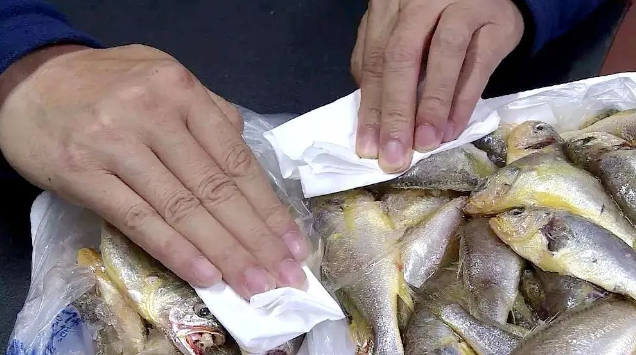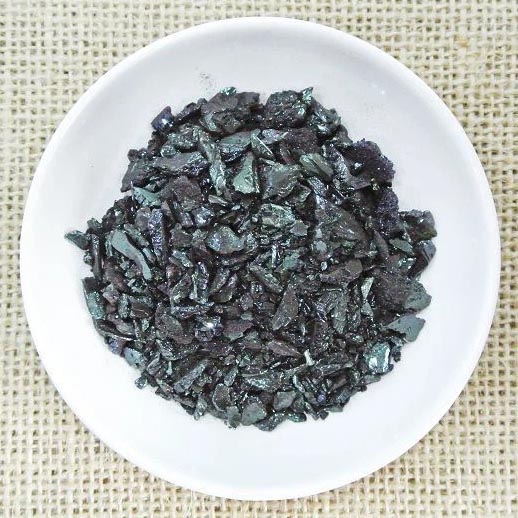Jiaojiao fish, also known as yellow croaker, is one of the characteristic fish species in the East China Sea and is loved by diners due to its fresh favour and tender meat. Generally, when the fish being selected in the market, the darker the color, the better the selling appearance. Recently, the Market Supervision Bureau of Luqiao District, Taizhou City, Zhejiang Province discovered during an inspection that dyed yellow croakers were sold on the market.
It is reported that law enforcement officers from the Market Supervision Bureau of Luqiao District, during their daily inspections of the Tongyu Comprehensive Vegetable Market, found that the Jiaojiao fish sold at a temporary stall on the west side of the market had obvious yellowing when touched with their fingers, indicating suspicion of adding yellow gardenia water staining. After on-site inquiry, stall owner admitted to using yellow gardenia water to apply to the fish in order to make the frozen delicate fish appear bright yellow and promote sales.
Subsequently, law enforcement officers discovered two glass bottles containing dark red liquid in his temporary residence on Luoyang Street. Law enforcement officers seized 13.5 kilograms of Jiaojiao fish and two glass bottles, and extracted the above-mentioned Jiaojiao fish, Jiaojiao fish water, and dark red liquid inside the bottles for inspection. After testing, basic orange II was detected in all the above samples.
Basic orange II, also known as basic orange 2, Chrysoidine Crystal, Chrysoidine Y. It is a synthetic dye and belongs to the basic dye category. Like Alkaline Orange 2, it is commonly used in the textile industry for dyeing purposes. Chrysoidine Y has a yellow-orange color and good color fastness properties, making it suitable for dyeing a wide range of materials including cotton, wool, silk and synthetic fibers. It is commonly used to produce yellow, orange and brown tones on fabrics. Chrysoidine Y can be used in other applications besides textiles. It is used in the formulation of a variety of products such as inks, paints, and markers. Due to its bright and vibrant color, it is often used to create eye-catching, intense hues. It is important to note that, like other synthetic dyes, the production and use of Chrysoidine Y has environmental impacts. Proper dyeing techniques, wastewater treatment and responsible disposal are necessary to minimize potential negative impacts on the environment. To ensure sustainability, we are conducting research and development focused on developing more environmentally friendly dyeing methods and exploring alternatives to synthetic dyes in industry.
Post time: Sep-27-2023







